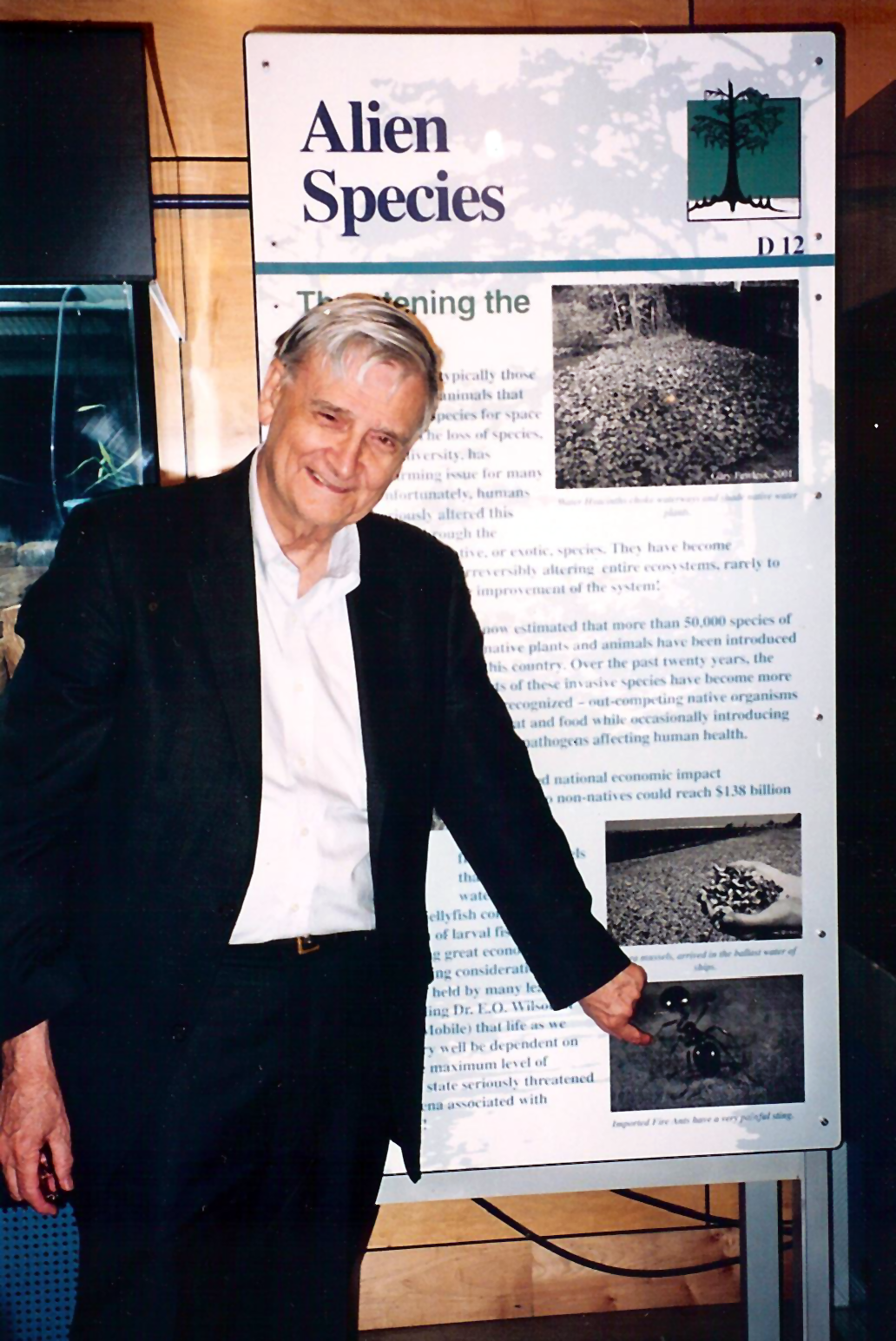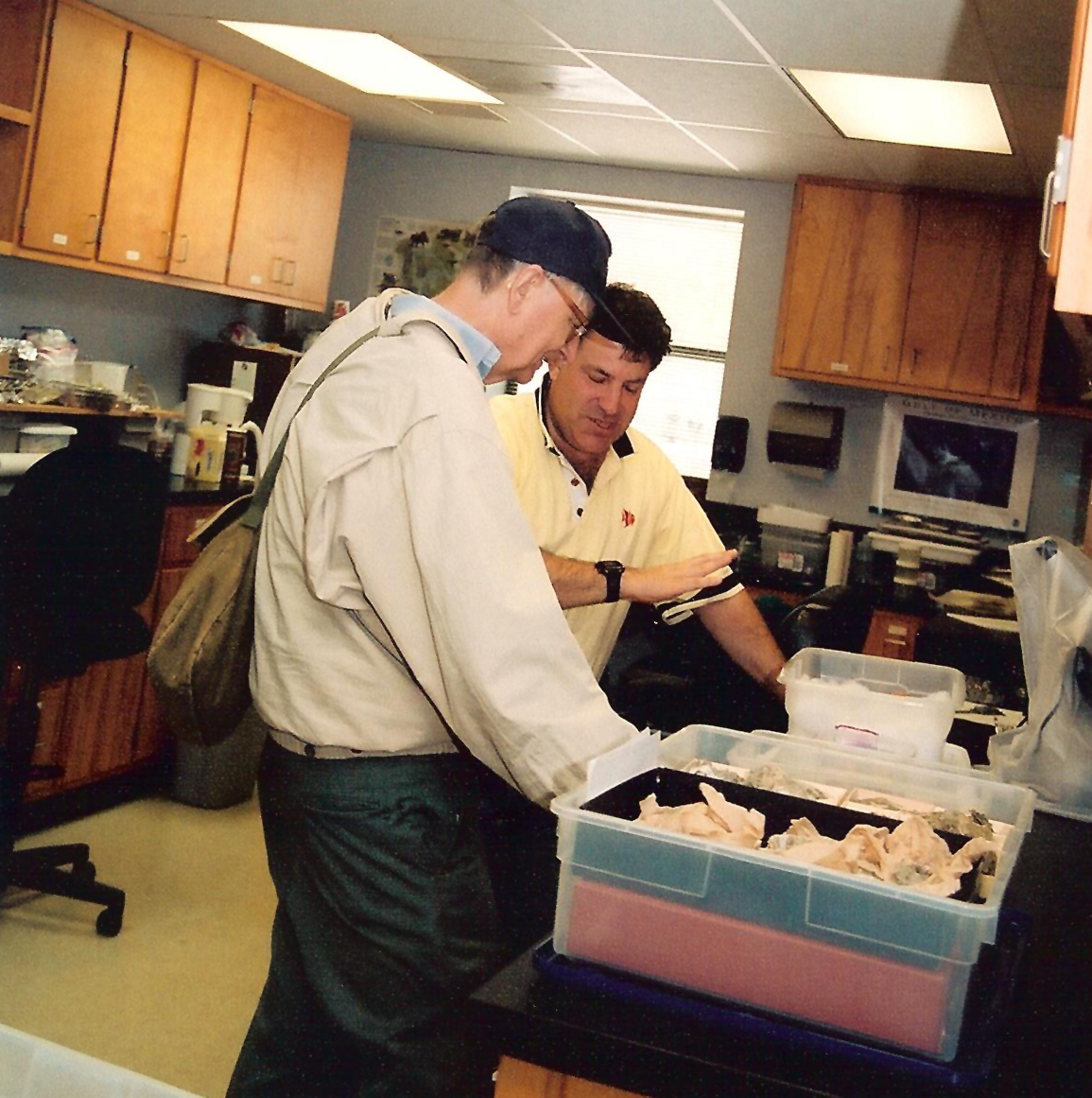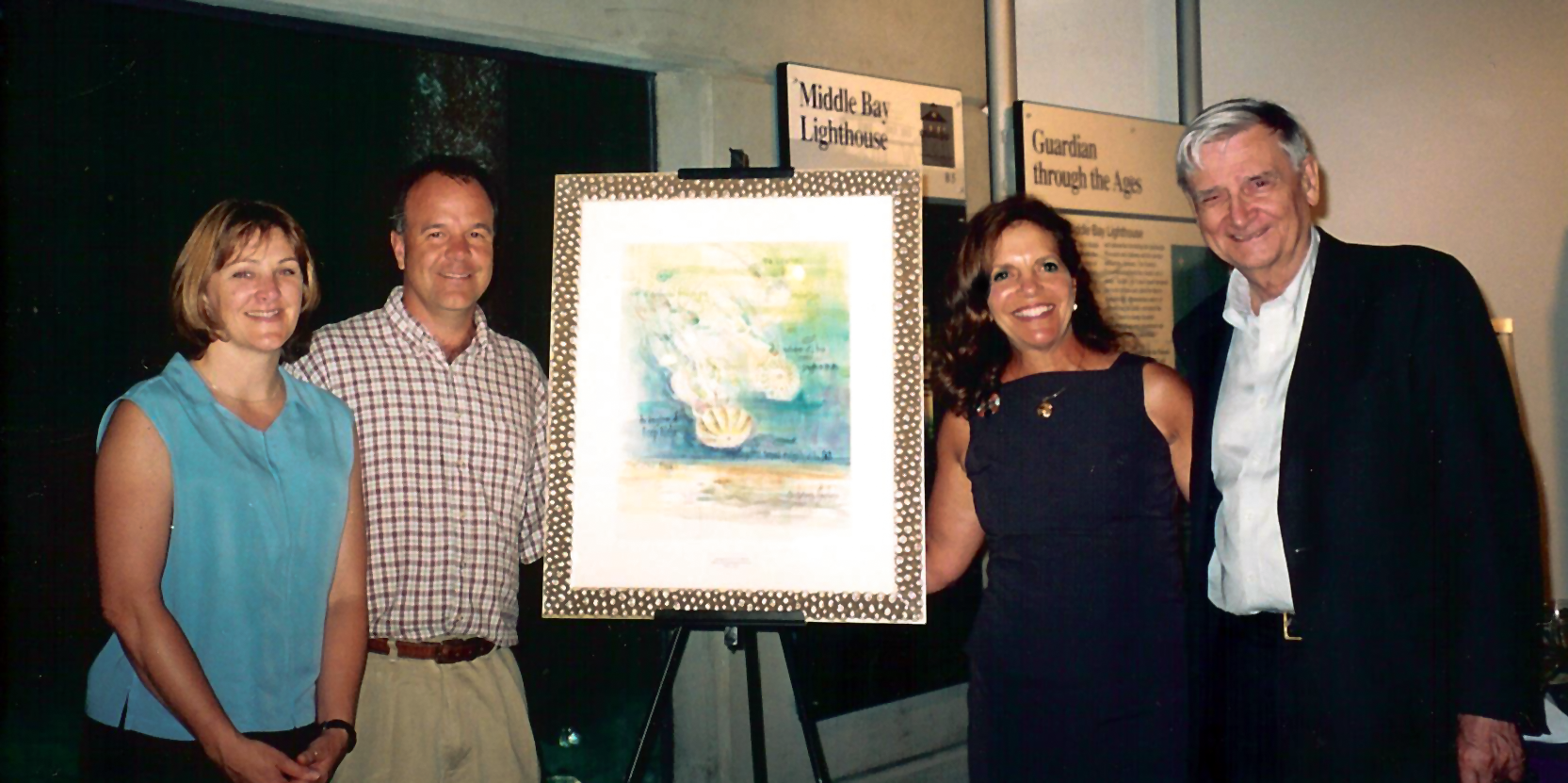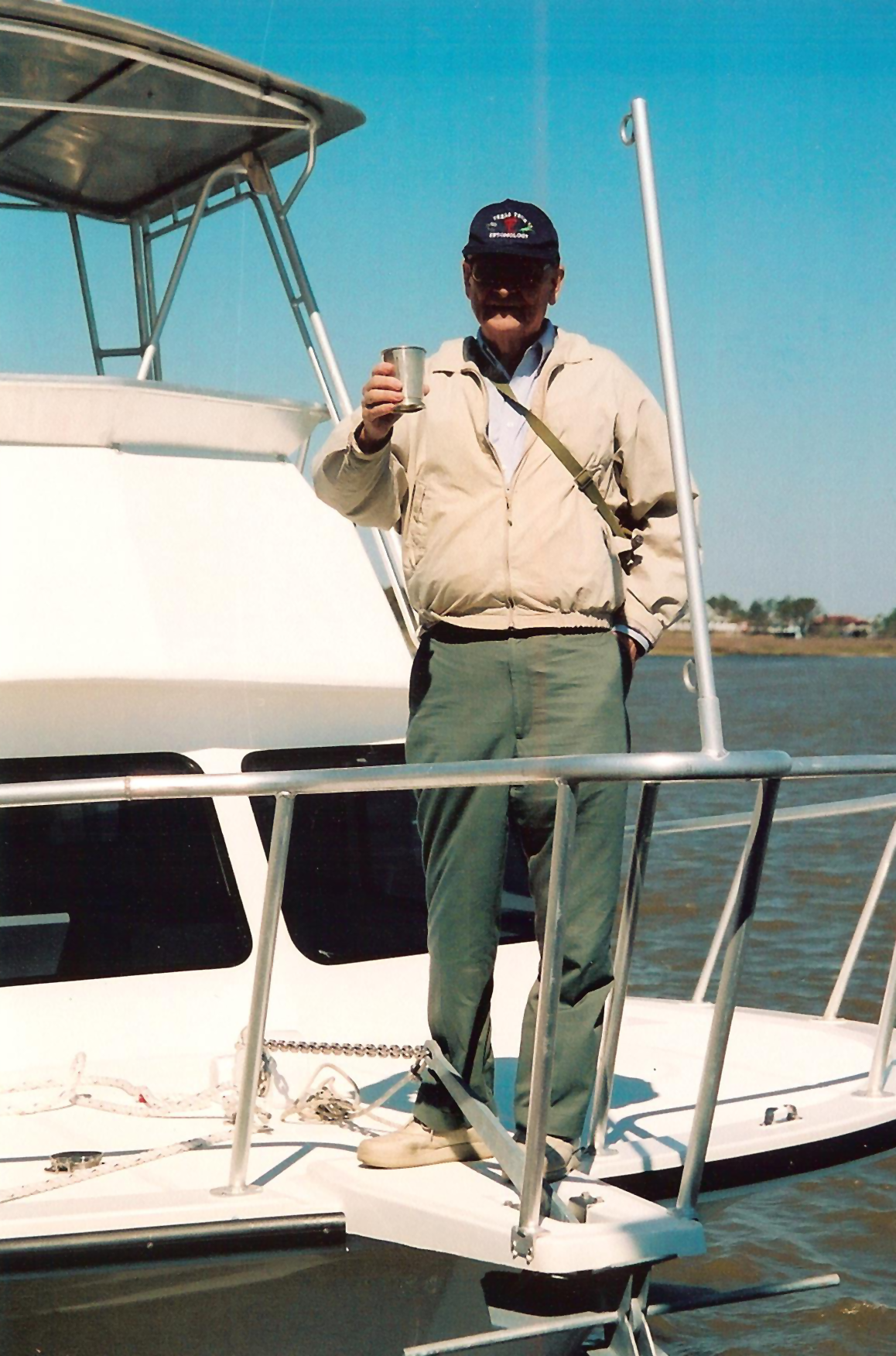(January 13, 2022) --

When E.O. Wilson graduated from the University of Alabama in 1949, the Dauphin Island Sea Lab was decades from being created by the Alabama Legislature. While Wilson never walked campus as a student or faculty member, he visited a number of times as a guest speaker for events and to christen the research vessel that bears his name.
Wilson passed away on Sunday, December 26 at the age of 92. He was a two-time Pulitzer Prize winner and noted entomologist from Harvard University. As a teen, Wilson was the first to identify the imported Brazilian fire ant. Something he called, “Mobile’s gift to the South” during a lecture at the Fourth Annual Gulf of Mexico Symposium held in Mobile in 2000.
On each visit to DISL, Wilson shared his love of nature and discovery. Dr. John Dindo remembers picking up Wilson from the airport for a lecture. An early arrival offered time for Wilson to bring Dindo on a walk down memory lane. Wilson had lived in Mobile from 1941 to 1943.
“He told me he would ride his bike out Government Street to the loop where the road ended and Wragg Swamp started,” Dindo recalled. “From there we drove through the tunnel onto the Causeway where he said he would collect snakes and frogs.”
Rich Aronson, a marine ecologist at the Florida Institute of Technology and former DISL Senior Marine Scientist, remembers going to pick Wilson up for a lecture in 2003 from his hotel, but he couldn’t find him at first. Turns out, Wilson was looking for fire ants in a wooded area nearby.

“He was a naturalist,” Aronson said. “To me, he was a very interesting person. He was always very gentle, very calm and he let his work speak for itself.”
Local artist Eugenia Foster remembers meeting Wilson during his visit in 2003. There was a dinner at the Alabama Aquarium formerly named the Estuarium. Foster was seated right next to Wilson.
“He was such a gentle and humble man,” Foster said. “He was engaging and I was fascinated by his research of fire ants.”
Foster said Dr. Bob Shipp had asked her to create a painting for Wilson. She took her inspiration from Wilson’s vivid childhood memory of a jellyfish which he recalled in his autobiography, The Naturalist. Foster said she was very careful to make sure her painting depicted the symmetrical nature of jellyfish which were accompanied by key phrases of Wilson’s childhood memory. The painting included keywords from Wilson's description of the moment in his life.
Dr. Jim McClintock, endowed professor of polar and marine biology at the University of Alabama in Birmingham, said Wilson was a dear friend and mentor.
“One of Ed Wilson’s many gifts to science was a capacity to describe with equal joy and eloquence the discovery of a simple chemical exuded by ants that signals the location of food - to the intricate factors that determine species diversity on islands or the constructs of the evolution of social animals,” McClintock shared. “Ed Wilson not only made breakthrough contributions in the fields of conservation biology, ecology, and evolution, but gave us hope and inspiration to transcend the environmental bottlenecks that threaten our very existence.”

DISL Executive Director John Valentine called Wilson an “outstanding role model” for aspiring scientists when remembering the late scientist in a chat with Lagniappe reporter Dale Liesch.

“He was the father of biodiversity and of all the concepts he worked on, advocating for conservation of biodiversity was one of the most important,” Valentine said. “He was someone who all of us in the profession admired for the commitment he had toward the conservation of Alabama’s resources.”
Wilson also had a belief in the Dauphin Island Sea Lab. At the christening of the R/V E.O. Wilson in 2005, he expressed that the Sea Lab was an emerging leader in marine science research.
"This lab is coming along to first-rate status now...this location and prospect for it will keep moving on to world-class status. It's inevitable. The opportunity is great, the location is ideal here at the center of the Gulf. The region needs its scientific expertise of this sort.
I think you'll move right on up. I mean this, I'm not being just a faithful Mobilian. It'll be right up there in the ranks of Scripps and Woods Hole. So it's a matter of finding the support in the State."
During his visit to Mobile and Dauphin Island in 2005, a public television documentary was filmed highlighting Wilson’s childhood in downtown Mobile. Dr. Dindo joined Bill Finch and Ben Raines during that filming which included an educational visit to the Mobile-Tensaw Delta. In the years after, Wilson’s influence inspired efforts to preserve the delta and areas like it.
John Goodloe, past president and member of the Dauphin Island Sea Lab Foundation, led an effort to create a memorial wall to Wilson in downtown Mobile. It’s four stories tall on the side of the Athelstan Club on St. Francis Street.
“Dr. Wilson will be remembered as the father of biodiversity by scientists and others around all over the world,” Dr. Dindo said. “But we’ll remember that Ed was one of the greatest scientists in the world and came from Mobile, Alabama. We will miss his insight, his writing, and mostly his friendship and love of the area.”